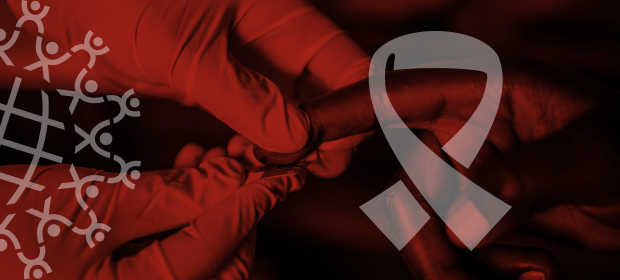Where We Work
See our interactive map


After COVID-19 began to spread, IntraHealth International used two strategies to improve HIV services in South Sudan. The strategies achieved great success and IntraHealth is transitioned them to South Sudan’s Ministry of Health for implementation across the country.
In collaboration with the US Centers for Disease Control and Prevention (CDC) and the International Centre for AIDS Care and Treatment Program (ICAP), IntraHealth used the Incident Management System and Granular Site Management strategies, which fostered teamwork and built data analysis and problem-solving skills among health workers.
By late 2020, COVID-19 had already affected both access to and the quality of health services. And in South Sudan, it was no different. IntraHealth’s Strengthening National Capacity for Integrated HIV/AIDS Health Data Collection, Use, and Dissemination in Support of an Evidence-based Response team saw that the number of adults and children with HIV who were receiving antiretroviral therapy was down to 56%, but because of COVID-19 restrictions, the team wasn’t able to conduct site improvement or joint supportive supervision, and inadequate coordination made implementation with partners at health facilities difficult.
In response to these challenges, CDC, IntraHealth, and ICAP partnered to roll out two different approaches across IntraHealth-supported health facilities: the Incident Management System (IMS) and the Granular Site Management (GSM) strategy.
“The GSM initiative has had many positive impacts on the health facility.”
IMS was originally developed to coordinate and manage responses to World Health Organization-designated public health emergencies of international concern. But Nigeria decided to adopt the IMS approach to manage their HIV programs and saw improved outcomes at high-volume facilities. So South Sudan followed suit to grow their HIV program.
GSM is an intensive approach for onsite program data review and quality improvement that helps improve health workers’ performance, grow HIV programs, and improve the quality of HIV services. Field officers work with teams of health workers to collect data daily. Then they submit data every week to project staff who generate dashboards that are used to review performance and create improvement plans.
After a core team of CDC, IntraHealth, and ICAP members formed in early 2021, they created a three-tiered structure to improve collaboration, streamline communication, and implement IMS:
After the GSM strategy underwent pilot testing, the team rolled it out across 28 high-priority facilities. IntraHealth provided six Zoom accounts to support the GSM calls across the selected sites, developed the schedule, and trained facility staff to use the continuous quality improvement (CQI) methodology to analyze data from the weekly dashboard and implement interventions.
Embedding the CQI approach within the GSM rollout helped 25 field officers and 45 facility staff build their knowledge and skills to provide improved HIV services. It also increased health workers’ confidence because they were participating in calls together with the Ministry of Health, PEPFAR, implementing partners, and other health facility staff.
“The introduction of the GSM initiative to the HIV/AIDS and TB program has had many positive impacts on the facility,” says Tabu Richard Lokeri, a clinician at the Saint Theresa Mission Hospital-Isohe. “Our facility team members are now able to generate and analyze facility data to make informed decisions at the facility levels and we are able to make significant improvements in HIV case identification through index testing.”
The GSM approach allowed space for everyone to attend the same meeting to discuss issues affecting program growth, which led to quick decision-making, easier acceptability of the interventions proposed in the meeting, and close follow-up. Unlike when data is used only at the national level, the GSM approach allowed facility staff to analyze and interpret weekly dashboards and make decisions based on evidence.
The GSM approach allowed facility staff to make decisions based on evidence.
“Through GSM we were able to raise performance issues affecting the facility,” says Olori Thomas, an antiretroviral therapy clinician and the Nyong Primary Health Care Center. “As a result, our facility is now renovated, which has created more space for maintaining clients’ privacy and confidentiality. We were also able to learn and understand our facility gaps and mutually agree on interventions to address them. Through GSM, there has always been room for discussion and learning how different facilities in the region have achieved their targets.''
The GSM methodology has fostered teamwork and built data analysis and problem-solving skills among project teams. Because of its success, the IMS is now transitioning to the Ministry of Health to scale up and introduce to all facilities across the country.
Merekaje Grace and Wole Moses contributed to this news item.



